- Qualcomm Launches Snapdragon 4 Gen 2 Mobile Platform
- AMD Launches Ryzen PRO 7000 Series Mobile & Desktop Platform
- Intel Launches Sleek Single-Slot Arc Pro A60 Workstation Graphics Card
- NVIDIA Announces Latest Ada Lovelace Additions: GeForce RTX 4060 Ti & RTX 4060
- Maxon Redshift With AMD Radeon GPU Rendering Support Now Available
Content and news by Rob Williams

Rob's Recent Content
AMD Streches Power Consumption Truths
It’s a good thing that their ATI division is starting to shape back up, because AMD themselves are having one heck of a difficult year. Most of the problems have been directly linked to their Barcelona processors, with no solutions (in the form of a revision) until early next year. We linked to a Tech Report article last week which investigated the problematic errata issue plaguing most Barcelona-based processors, and now, DailyTech have arisen another potential problem – AMDs ACP ratings.
Unlike TDP, which assumes the total wattage for a processor at full load, ACP offers what AMD feels to be an average wattage during normal use. So, if a CPU is rated for 70W ACP, it means that during normal use, that’s the average wattage you should expect. However, as common sense would imply, listing an “average” doesn’t make much sense. It’s simply too difficult to declare an average, as usage varies from user to user. Thanks to this fact, many are claiming that AMD “lies”, or stretch truths.
The article at DailyTech points out more specifics, including a fact that ACP ratings were not changed in whitepapers as they should have been – although that could have been an accidentally overlook on AMDs part. But when it comes to AMD, it seems everyone has their own opinions. Right now though, it’s hard to ignore the facts. AMD needs to change how they do business, while cutting out the stretching truths part.

|
The first thing to notice is that TDP measurements are significantly higher than ACP. When AMD compared its power consumption figures to Intel’s TDP, ACP measurements significantly underestimate power consumption. TDP differed between the two versions of the white paper by as much as 20 W, which is a 21% increase in the case of the quad-core Opteron. AMD did not increased its ACP estimates, emphasized in bold, despite the TDP increase.
Source: DailyTech
Published on December 11, 2007YouTube Opens Up Revenue-Sharing
It seems like just yesterday that YouTube made headlines by offering revenue-sharing to a 20-year-old content creator. Well, all of those of you who’ve waited to see what came to fruition shouldn’t waste time, as YouTube have just opened up offers for applications to content creators who want to be paid (and rightly so) for their content.
Given the size of YouTube and the sheer amount of fellow content creators out there, applying as soon as you can is a smart idea. They don’t mention any limits on a number of publishers, but the longer you take to apply, the longer it will take to be potentially approved. They also don’t make mention of revenue figures, but it’s sure to beat $0.

|
YouTube is expanding its program to share a cut of the AdSense advertising revenue associated with your videos on the site (even though most videos are watched elsewhere in embedded players that typically don’t carry ads). I guess Metacafe and Revver, which have been sharing their video ad revenues with their contributors for a while, had the right idea after all.
Source: TechCrunch
Published on December 11, 2007Intel Marks 60th Anniversary of the Transistor
Although the first patents for transistors happened long before December 16, 1947, it was William Shockley of Bell Labs who first delivered the first efficient transistor with the help of a few colleagues. To say it has come a long way would be a massive understatement. In a release yesterday, Intel reiterated the fact that they kick ass with transistors, a fact proven with the help of their recent 45nm processors.
To put the size into perspective, and to borrow from our review of the QX9650 3.0GHz Quad-Core, the new 45nm QC CPUs include over 820 million transistors. Not impressed? How about another comparison – 2,000 45nm transistors could fit along the span of a human hair… and 30,000,000 on the head of a pin. Impressive… yes. Mind-boggling… yes.
While on the Intel scheme of things, Gizmodo has posted a quick overview of all Intel processors from 1971 to 2007.

|
SANTA CLARA, Calif., Dec. 10, 2007 – Intel Corporation on Dec. 16 celebrates the 60th anniversary of the transistor, the building block of today’s digital world. Invented by Bell Labs and considered one of the most important inventions of the 20th century, transistors are found in many consumer electronics and are the fundamental component used to build computer chips, or the “brains” of the personal computer (PC).
Source: Intel Press Release
Published on December 11, 2007Toshiba Unveils Spring SSD Line-up
Although solid-state disks are catching on fast, it took Toshiba a while before making an appearance. Today, they’ve finally announced their upcoming line-up, with production beginning in Spring of next year. Products will include both 1.8" and 2.5" models, with densities ranging between 32GB and 128GB.
The problem with SSD so far has been the price, with 128GB models costing thousands of dollars. With Toshiba’s mass-production, hopefully prices will begin to plummet, because right now there is strong desire for adoption, but prices are simply not reasonable. This cannot happen fast enough… fast speeds, low power consumption and nil-noise… it’s hard not to want one.

|
TOKYO–Toshiba Corporation today announced its entry into the emerging market for NAND-flash-based solid state drive (SSD) with a series of products featuring multilevel-cell NAND flash memories. Offered in a range of form factors and densities, Toshiba’s solid state drives are designed primarily for notebook PCs. They will be showcased at the Consumer Electronics Show in Las Vegas, from January 7th to 10th. Samples and mass production will follow from the first quarter (January to March) of next year.
Source: Toshiba Press Release
Published on December 10, 2007Honeywell Introduces HDMI to Cat5/6 Converter
Honeywell probably isn’t a name that first comes to mind when dealing with home video equipment, but lately they’ve been introducing some interesting products. In late August, they announced a “self-healing” HDMI cable, which corrects HDCP and EDID data before it reaches your television. As interesting as that was, a fresh announcement takes that to a new level.
The HDMI to Cat5/6 converter works in a scenario where your HDMI source is not in the same room as your display. Both the source and destination walls would have a special socket installed, each accepting an HDMI cable. Connecting the two would be a Cat5 or Cat6 cable. Though it sounds strange, Honeywell promises 1080p content to run smooth up to 125′ with Cat5 and a staggering 200′ with Cat6. This new converter uses the same correction technology as the previously announced self-healing cable. Definitely a niche product, but cool nonetheless.

|
PLEASANT PRAIRIE, WI, December 10, 2007— Recognizing the high number of homes pre-wired with category cabling, Honeywell (NYSE: HON) today introduced a new HDMI to CAT5 converter that lets A/V installers transmit HDMI audio and video source material over long distances using economical CAT5e or CAT6 cables.
Source: Honeywell Press Release
Published on December 10, 2007Spike Video Game Awards Show Results
Spike TV is a network that came out of nowhere and somehow became a trusted source for video games. How this happened, I’m unsure. Questions aside, their awards show, Spike Video Game Awards, is now an event looked forward to by gamers everywhere. Their fourth aired last night and Flynn at Kotaku was there to attend. I wish I watched just to see the Foo Fighters perform… and Tommy Tallarico… and ok, even Kid Rock.
Of course it’s the awards that matter. If you are worried about spoilers… don’t. You already know what game wins what. BioShock, not surprisingly (and though I highly disagree), received the GOTY award while the best studio was given to Harmonix (creators of Guitar Hero, Rock Band). It’s also no surprise that best graphics were awarded to Crysis and breakthrough technology to Portal. Hard to disagree with either. For the rest of the winners and a full event roundup, check out the full writeup.
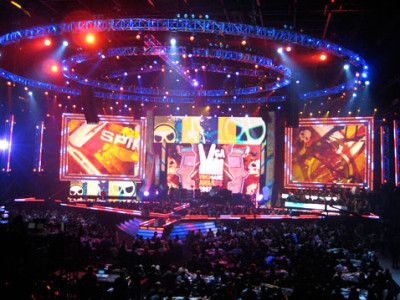 Source: Kotaku |
BioShock took home three awards including Best Original Score, Best Xbox 360 Game and the big daddy of them all, Game of the Year. Fan favorite Halo 3 had two wins with Best Multiplayer Game and the highly dubious Most Addictive game fueled by Dew. Seeing as Mountain Dew launched a full fledged advertising campaign that revolved around a new soft drink devoted to Halo 3 this was hardly a surprise even though this category was allegedly voted on by the fans.
Source: Kotaku
Published on December 10, 2007ASUS Makes Memory Upgrading Eee-zy
The ASUS Eee has been selling incredibly well in the marketplace, and it’s not much of a surprise. The ultra-portable notebook weighs only 2lbs, has sufficient capabilities and costs only $400. What’s not to love? Well, the warranty was an issue… until now. Ambitious owners who wanted to upgrade their Eees memory were halted with a “warranty void if removed” sticker. This is rather silly, considering most consumer notebooks allow upgrades without much hassle.
Well, ASUS has gone and corrected this little “mistake”. In a press release, they’ve revealed that users will no longer void any warranty for removing that sticker or upgrading the RAM. See, the Eee can get more awesome. That said, I’m still going to wait for the purple and orange Pimp Edition to stroll along.

|
Sales of the Eee PC have been so strong that ASUS is projecting that it will sell 3.8 million units during fiscal 2008. The company will also provide versions of the Eee PC which feature a cost-reduced, feature-stripped version of Windows XP — current Eee PCs ship with Xandros Linux although a Windows XP driver CD is provided for do-it-yourselfers.
Source: DailyTech
Published on December 10, 2007Lexus Sues Another Pornstar Over Name
Companies who sue small companies over frivolous matters is nothing new, but this is one of the more humorous hilarious ones. Lexus, who sued a pornographic actress earlier this year for using their namesake as a stagename, is now apparently so bored, they have continued along the same road and now have sued a gay pornstar for the same reasons. Yes, there apparently is a gay pornstar named Lexus, but if that’s not amusing enough, the studio that represents him is called EboysStudio. Perhaps a certain auction site should get in on this action too?
The performer apparently chose to be called Lexus because it’s the name of a Greek God… how unique. Curious, I checked out the Wikipedia entry for Greek Gods, and nowhere does it list a “Lexus”. It could be that this God hasn’t yet come out of the closet, but that’s still up in the air. Regardless, I hope someone else finds this story as hilarious as I did.
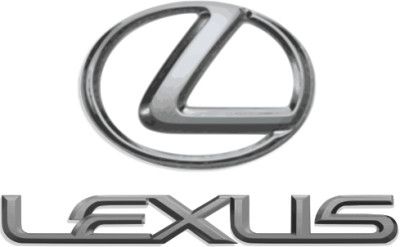
|
EBoys president Daniel Grangier, quoted by the GayWired news service, says the performer chose to be called “Lexus” because it is “the name of a Greek god,” not because of the cars. Grangier said his company’s own attorney is “now in negotiation with Toyota’s legal team” and will resist demands for a worldwide recall of two films starring the controversially named actor.
Source: Inside Line
Published on December 10, 2007ASUS PG221 22-inch Wide-Screen
Smaller displays don’t need to lack features, and ASUS proves this with their PG221 22-inch wide-screen. It boasts such specs as 2ms GTG, 2000:1 and stellar design. Where its unique though, is with it’s large subwoofer. Yes, we said subwoofer! Do the features make up for it’s higher price?
Published on December 10, 2007CompUSA Officially Closing Up Shop
I grew up and still live in Canada, so I am not familiar with CompUSA at all. However, it’s easy to see the impact it had on B&M stores since it’s first opening in 1984. The franchise closed many stores earlier this year, so the writing was on the wall. The rest of the stores will either be sold off as assets or closed altogether, including online properties. Total stores closed this year would total 229.
Of course where there is bad, there might be some good. In CompUSA’s case, it means that stores should have some amazing deals before they close up shop. If you are near a CompUSA, you should remain in the lookout.
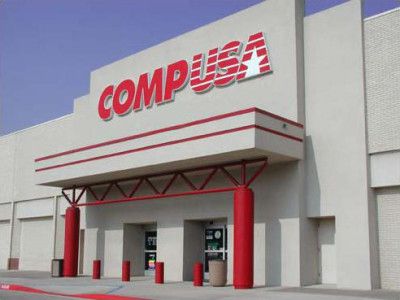
|
The upside, if there is one, is that we will see some great deals at the remaining stores, just as we did in February during the closure of 126 stores. Gordon Brothers Group promises that consumers will be able to find “attractive holiday bargains” as part of the sale process—I know a good number of geeks who will be making a mass exodus to the soon-to-be-extinct stores over the weekend to get some holiday shopping for themselves done, for sure.
Source: Ars Technica
Published on December 10, 2007ASUS Launches 1GB GDDR3 EN8800GT
ASUS announced last week the first 8800GT card equipped with 1GB of GDDR3, courtesy of Qimonda. Equipped with the extra memory, the EN8800GT is destined to allow the highest of resolutions while keeping maximum quality settings. Of course this is said of all cards, but the real test will be a direct comparison of a 512MB version to this one, an experiment we hope to have results for in the coming weeks.
The big question of course is whether or not the extra memory is actually going to improve performance. The card will still have a 256-bit memory bus, which will still be a limiting factor. Regardless, other features of the card include a Glaciator heatsink that promises temperatures 7°C lower than that of reference models. Because of this, ASUS believes that a 10% improvement on the shader clock can be achieved with minor overclocking. Keen.

|
FREMONT, CA (December 6, 2007) – ASUS, worldwide leader in component and notebook design and manufacturing, today released the world’s first EN8800GT graphics card with 1GB of Qimonda memory: The EN8800GT/HTDP/1G. Rocking NVIDIA’S latest generation Graphics Processing Unit (GPU) and an unparalleled amount of memory, this card is designed to provide a feature-rich DirectX 10 gaming and multimedia playback experience at ultra-high resolutions and maximum quality settings.
Source: ASUSTeK Press Release
Published on December 10, 2007Amarok 2 for Windows Pre-Alpha – Now With Sound!
I began using Linux full-time about eighteen months ago, and since then I’ve come to enjoy it so much that I’ve have a very difficult time moving back to Windows if I had to. Oddly enough, one of the reasons is thanks to a single application: Amarok. It might sound odd to be obsessed with an audio player, but Amarok’s ease of use and feature-set easily surpasses all others I’ve used… Linux or not. For those not familiar with the player, you should check out my article for Top 5 Amarok Tips which covers a few of my favorite features and add-ons.
Fanboism aside, I couldn’t help but notice a new entry on the Amarok blog that announced a version that’s actually functioning on Windows. Though in pre-alpha, it’s coming along nicely with many features functioning, including sound. I didn’t give it a try myself, but it’s great to see another solid open-source offering making it’s way to another OS. The final release might be a ways off, but it should be worth it.
 Source: Amarok Blog |
The bad news for all those drooling over the prospect of this is that Amarok 2 is still pre-alpha software, and there’s a lot more work to do to get it ready for release on any platform, let alone Windows. So for now, unless you’re comfortable with a compiler and a debugger, Amarok is still a few months away. Until then, get your fix with screenshots and progress here. World domination will have to wait … but it will happen!
Source: Amarok Blog
Published on December 7, 2007Intel to Release Celeron E1000 Dual-Core on Jan 20
Intel’s Celeron processors have been designed for value-conscious consumers since their inception, and that is not about to change. However, as the rest of Intel’s line-up continues to grow and improve, so do their budget offerings, which is evidenced by the new E1200 1.6GHz. According to DigiTimes, this sku should launch on Jan 20 for a price of $53 per 1,000 units.
What sets this model apart from other Celerons is the fact that it’s dual-core, so despite being slower overall to begin with, the second core will greatly boost performance in applications that support multi-threading. As expected, other features are kept to a minimum, such as the 800MHz FSB, 512KB L2 cache and of course, the price, at $27 per core. For those with a specific need to keep things strictly budget, the E1200 will be a great choice. For the rest of us, Intel’s E8200 (2.66GHz, Dual-Core, 1333MHz, 6MB L2 cache) at $163/1,000 will be a hard deal to beat.
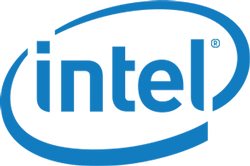
|
Meanwhile, Intel will also roll out the quad-core QX9770 processor which features a frequency of 3.2GHz, 1600MHz FSB, 12MB cache and TDP of 136W with a price tag of US$1,399 in thousand-unit quantities in January. Before March, the company will also introduce a high-end quad-core QX9775 processor with a frequency of 3.2GHz, 1600MHz FSB, 12MB L2 cache and 150W TDP. Pricing in thousand-unit quantities will be US$1,499, said the sources.
Source: DigiTimes
Published on December 7, 2007Time Crisis 4 Requires Purchase of Two Games for Two-Player Action
Ripoffs in video gaming is nothing new. Whether it’s EA’s downloadable content for items that can be acquired through regular gameplay or rechargeable gamepad battery packs that need to be purchased separately… it sucks getting played for a fool. The latest case is with Namco-Bandai, creators of a great arcade-style shooter called Time Crisis 4. To mimic a true arcade experience, a normal gamepad is not used, but rather a Guncon 3 gun peripheral.
More often than not, if a game offers a special peripheral that’s required, spares will be sold separately. This makes sense for more than one reason – namely, if it breaks. The Guncon 3 is apparently special however, and requires the game to be repurchased. For a game that costs close to $100, this is needless. I’m not familiar with Namco-Bandai’s policies on third-party peripherals for their games, but it’s unlikely we will see a unique mockoff anytime soon.
 Source: Joystiq |
Some non-game playing exec at Namco Bandai has decided that the gun controller that ships with Time Crisis 4 for the Playstation 3 cannot and will not be sold separately, even though there’s a 2-player mode in the game. Their CSR’s helpful suggestion? “You will need another copy of Time Crisis 4.” It’s as if the game is a license to use one gun controller—if you want more gun controllers, simply buy more licenses!
Source: The Consumerist – Via: Joystiq
Published on December 7, 2007Seagate FreeAgent Dislikes Linux, Reports of Units Dying
There are few companies that leave me constantly impressed, but Seagate is one of them. Their products have never left me disappointed, which is why all my computers use their hard-drives. Even their RMA process is rather painless – something I figured out a few years ago when a hard-drive passed on. With a company that focuses so much on quality, it was no surprise to see Rory award their FreeAgent Pro a 9 out of 10 earlier this year.
However, what we failed to test was Linux compatibility. This wasn’t a huge issue, however, as I am the only one on the staff who uses Linux on a regular basis, and the drive was not in my possession. But ignoring that, I had assumed that Linux interoperability would have been no problem. After all, it’s just an external enclosure.
Apparently not, according to the the Inquirer. Because the drive inside the FreeAgents use the NTFS file system, it creates obvious problems for Linux users. It can be worked around, but at that point, you might as well go with a competitors enclosure that will not waste your time. Since most enclosures utilize FAT32, I am going to assume that Seagate chose NTFS because that’s the filesystem their recovery software natively handles.
On a related note, there has been an ongoing discussion in our forums for the past month with numerous FreeAgent users who’ve had their units die. One user had his unit die after a single week of owning it. This could be a bad batch, I’m unsure. When presenting Seagate with the thread, they said they’d take a look at the issue, but nothing happened from there that I am aware of. We’d be interested in knowing how many out there are having issues with their FreeAgent. If you are a FreeAgent owner and have had one die, or even if yours is still kicking, feel free to post in that thread.

|
The NTFS is only a slight hurdle to Linux users who have a kernel with NTFS writing enabled or can work mkfs. But the “power saving” timer is a real bugger. It will shut shut the drive off after several minutes of inactivity and helpfully drop the USB connection. When the connection does come back it returns as USB1 which is apparently as useful as a chocolate teapot.
Editor’s Note: In our experience, it appears to be the basic FreeAgent drives that are failing, and not their pricier siblings, the FreeAgent Pro. Lest we risk guilt by association between the two products, we can only assume that because of the lack of feedback on the “Pro” version, that no problem exists with those models. The original review sample continues to perform well. – Rory Buszka
Source: The Inquirer
Published on December 7, 2007Playstation 3 to Receive Blu-ray Profile 1.1 Later This Month
I have to admit something. I love the Playstation 3. Despite not playing it as often as my Xbox 360 (which recently died), I get excited each time I turn it on simply because it’s well-designed and offers plenty of power. Another plus is the fact that Sony has been treating their customers well with constant system updates that add new functionality and fixes.
Well, PS3 owners have another reason to be pleased, because the latest Blu-ray profile (1.1) will be heading to the console later this month. This should come as no surprise, considering that the PS3 is one of the primary reasons for the Blu-ray adoption. Profile 1.1 unlocks “next-gen” features such as PiP, better support for downloadable content and other playback fixes.
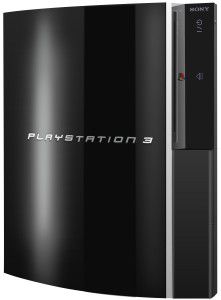
|
Furthermore, Sony aims to ensure that the machine continues to perform as a strong Blu-ray player as well as a gaming console by releasing the firmware update, Profile 1.1. This new update adds support for next-gen Blu-ray playback features such as picture-in-picture playback, which for 2 separate viewing windows, one where the director could be talking while in the other, the film playing. The other features range into step categories like support for downloadable content.
Source: Playstation Universe
Published on December 7, 2007AMD Comments on Errata Issue
We reported yesterday regarding Tech Report’s look into the errata issue that is plaguing all current Barcelona-based processors, including the desktop-aimed Phenom. The issue resides within the TLB logic for the L3 cache which can, on a rare occasion, crash the computer. That in itself isn’t a major issue given the fact it can be patched, but it’s the erratas fix that makes this a big problem. As discovered in Scott’s testing, the performance degradation can be significant.
According to DigiTimes, AMD knew of the problem before Phenom’s launch and provided the channel and board partners with an appropriate fix. Whether or not this was kept mum on purpose, no one knows. However when taking a look at the facts, it’s no surprise that AMD would want to keep the patch and errata issues quiet. Even without the patch, Phenom proves slower overall than Intel’s equivalents. If the patch was applied before all reviewers performed their testing, the Phenom launch would have gone horribly wrong.
Hope is far from lost, however. Tech Report also reported that Phenom revisions in the form of 9550 and 9650 will be launched in January, fixing the errata problem without the need of a patch. So for those planning to upgrade to a new AMD Quad-Core, it would be wise to wait until these new models hit the street.

|
In response to recent reports of the existence of an erratum involving the L3 cache of AMD’s new Opteron (Barcelona) and Phenom processors and that shipments of the parts have been delayed, AMD clarified that the company sent notice to clients about the erratum and offered a BIOS fix prior to November 19 and that the company is shipping Phenom parts to channel, system builders and OEM customers.
Source: DigiTimes
Published on December 7, 2007EVE Online Patch Breaks Windows XP
The latest entry to the “How the hell did this happen” files has to do with EVE Online’s latest game patch, which adds a slew of functionality and upgrades and also manages to kill off a Windows XP installation. For those not aware, Windows XP uses a file in the root folder called boot.ini, and inside that file is a simple boot loader configuration. If this file is corrupt, the Windows will not boot.
 |
Somehow, the latest EVE patch got out the door with the ability to overwrite that file, effectively angering many gamers. Players using Windows Vista have nothing to worry about, since the boot.ini boot loader has been replaced by a far more tedious and difficult boot loader that requires more than a simple file edit. If you happen to find yourself with a borked Windows XP installation thanks to this patch, you can follow these steps which can re-write the boot.ini:
- Boot up with a WinXP CD-Rom
- Once inside the installer, you will have the option to hit “R” to enter recovery mode.
- The screen will turn black and you will have a list of one or more Windows installations you can choose. Choose the primary.
- Once at the prompt, you can type in fixboot which should re-write the boot.ini file and undo the damages that the latest patch caused.
If you dual-boot XP with Vista, chances are good that your XP installation should still be fine, as the boot.ini would be stored on a different partition. How did this happen CCP? There are no excuses for this.
Source: Patch Page, Thread 1, Thread 2 Via: Slashdot
Published on December 6, 2007Long Beta to Blame for Tabula Rasa’s Lukewarm Reception?
MMORPG titles first hit the gaming scene in a big way eight years ago with the help of Asheron’s Call and Everquest, and since then, things have changed drastically. Back then, all titles were unique… there just wasn’t that much competition at the time. Nowadays it’s a different story. There seems to be a new MMO game released every other day and because of that, it’s difficult to grab the attention of gamers.
One of the main reasons is obviously World of Warcraft, which now has well over 9 million subscribers. How can a company compete with that? By being completely unique and creating a game with killer gameplay, two things that Tabula Rasa doesn’t seem to include. I’ve not played the game, because I’ve seen it go through so many changes, I’ve just lost interest. Not surprisingly, sales have been somewhat lackluster, which Richard Garriott blames on the games long beta process. Long beta or not, I think any MMO game is going to have a rough time selling until WoW begins to lose it’s appeal.
 |
“By having an open beta, anyone who cares about MMOs will have already played it,” continues Gillen. “And when they compare their experience to a reviewer, they tap the side of the head knowingly. Because they’ve played it, and it was a bit nob.” “But Tabula Rasa turned out pretty neat and now it’s got a large number of people who’ve played the game who’ll roll their eyes at its existence if mentioned,” he concludes.
Source: Shacknews
Published on December 6, 2007Microsoft to Release Vista SP1 Publicly Next Week
Vista has proven to be a popular operating system over the past year, but mostly thanks to the fact that it’s bundled with the majority of new computers sold… desktops or notebooks. To catch on even greater though, problems need to be fixed. Service Pack 1 is supposed to fix numerous issues that make usage of the OS an absolute chore. Up to this point, the SP1 beta has been delivered to a select few. Next week will change that with the first publicly available version – Release Candidate 1.
All information regarding the SP1 can be found in the official whitepaper. For those who would rather avoid SP1 even at final launch, you can install a blocker patch that will disallow installation via Windows Update. I am going to wait until the final release before giving Vista’s first service pack a test, and it sure can’t come fast enough.
 |
Today we’re making available the release candidate (RC) of Windows Vista SP1 via Microsoft Connect, and tomorrow subscribers to TechNet and MDSN will have access to those RC bits too. In addition, the RC will be available to the public next week via Microsoft’s Download Center. The release candidate phase of beta software is typically the final phase before the RTM (release-to-manufacturing) of a product and indicates that the code has attained a significant level of performance and stability.
Source: Windows Vista Blog
Published on December 6, 2007Older Entries
Newer Entries
Copyright © 2005-2025 Techgage Networks - All Rights Reserved.
About Us | Advertise | Terms & Conditions | Privacy Policy




